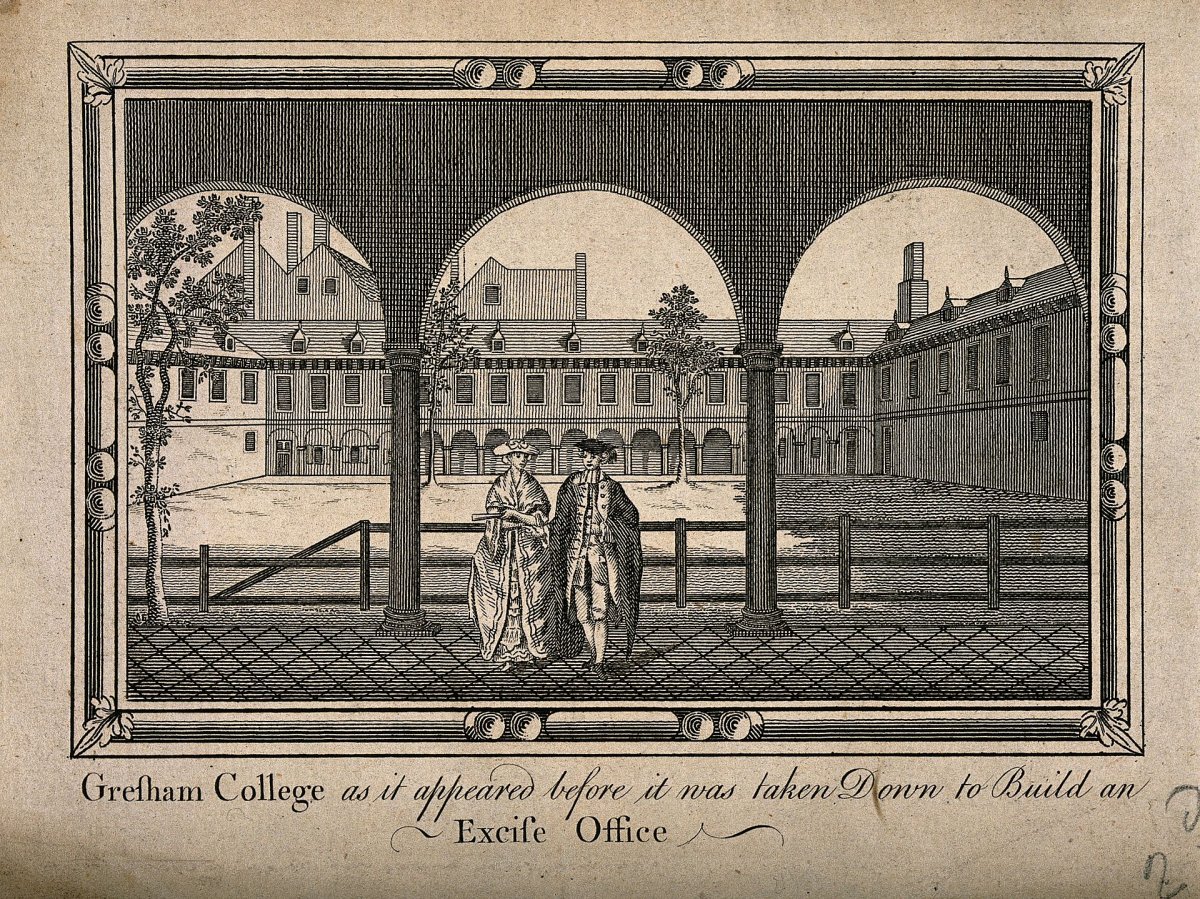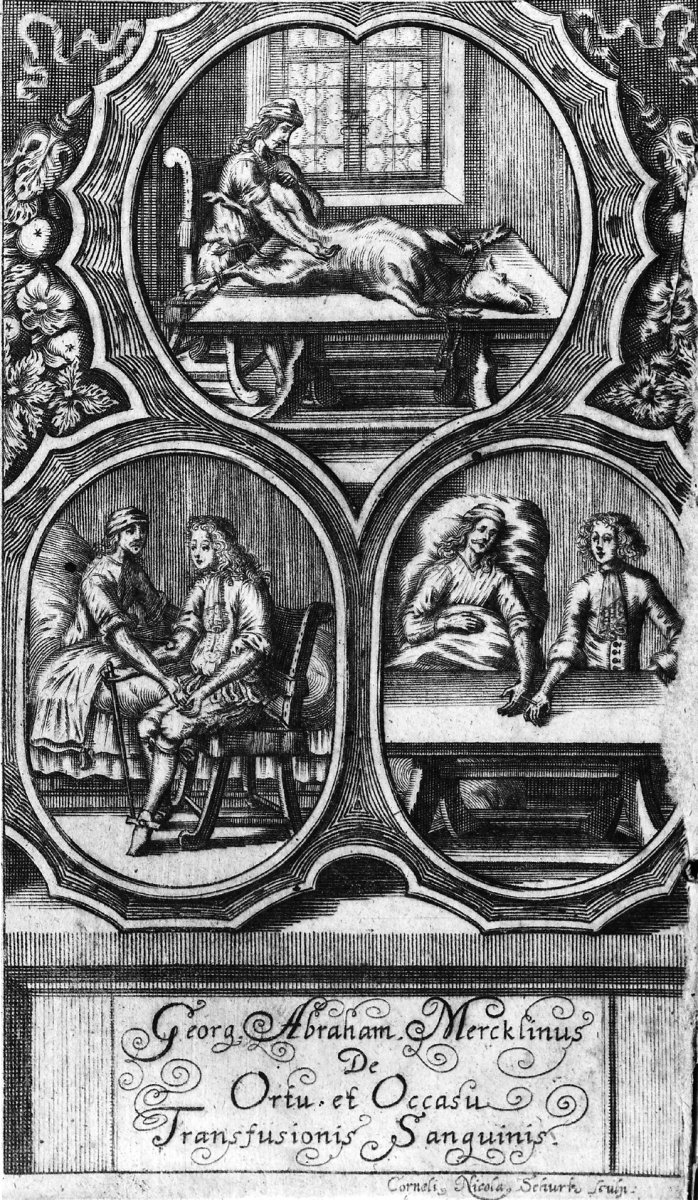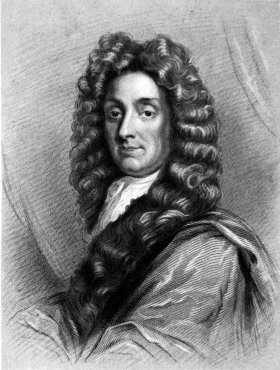Adrian Tinniswood begins The Royal Society and the Invention of Modern Science by describing seventeenth-century England’s intellectual paradigms, which rested upon ancient Christian doctrine, Aristotelian philosophy, and other classical foundations. For example, the earth-centered universe referenced in the Old Testament book of Joshua, as well as the Galenic theory of humoral medicine, remained canonical despite their age. Deviation from these entrenched models was professionally dangerous and often censored, as Galileo Galilea discovered after professing his belief that the earth rotated around the sun.
However, during the same period a plucky group of studious researchers and inquisitive amateurs believed in an alternative route to best verify natural laws. This group of 12 Englishmen, led by heavyweight figures such as the architect Christopher Wren and the natural philosopher Robert Boyle, met in London’s Gresham College in 1660 to establish a revolutionary scientific society. Its members were influenced by Francis Bacon’s method of empirical analysis and persistent experimentation. This, they believed, was a better route to scientific discovery. The meeting set in motion what became The Royal Society.
Accounting for their methodology, scholarship, and activities, Tinniswood convincingly argues that The Royal Society invented modern science. The Society adhered to the Baconian method, the formative concept undergirding observational science still taught today as "The Scientific Method." Under the guiding influence of secretary Henry Oldenburg, the Society published their fellows’ research in the world’s first scientific journal, Philosophical Transactions, in 1665. It remains the longest-running scholarly publication in print.
The Society even created modern institutional rules that included rates for dues, electoral procedures (many prominent scientists, from Isaac Newton to Hans Sloane, served as president), and membership bylaws—all included in their constitution that proclaimed their overarching purpose “to consult and debate concerning the promoting of experimental learning.” From their innovative methods to their revolutionary journal of record, The Royal Society embodied modern scientific principles.
Gresham College, where the group first met, was an educational center created by an endowment from the London merchant Sir Thomas Gresham. Prior to the Society’s formation, the College had a reputation for its faculty’s scientific and mathematic scholarship. In addition to Wren, the founding physician Jonathan Goddard and astronomer Lawrence Rooke also taught there. Gresham served as the Society’s home until its transition to Arundel House in 1710, where it remained until 1780 when it moved to the larger Somerset House. After again relocating in 1857 to Burlington House, it came to its present location at Carlton House Terrace in 1967.
The Society desired a Royal Charter to ensure its permanence, authority, and legitimization. Members believed this was necessary to elevate them to an esteemed position in the eyes of competing Oxbridge scientists, derisive Anglican clergy, and the skeptical public. Owing much to the efforts of member John Evelyn, the Society secured a charter by order of King Charles II in 1662 that officially made them "The Royal Society of London," labeled its members as "Fellows of the Royal Society," and enshrined a motto that signaled a break from tradition and embraced modern scientific inquiry: take no one’s word for it.

Gresham College as it appeared before it was taken down to build an Excise Office, 1770
The nature of the Society’s membership evolved over the following centuries, but from its beginning it was a multifarious organization. Members of the British gentry that used the Society as a means for social advancement (while injecting it with much-needed capital) were plentiful alongside studious researchers. This diversity created a tension between science and privilege that finally exploded in 1830 when fellow Charles Babbage lambasted the glut of unproductive members. In 1847 the Duke of Sussex took the Society’s reins, and scientific fellows seized control and amended its constitution in 1847 to stymie further influence from the gentry. This power-grab forever transformed the nature of the Society from that of a scientific social club into a scholarly society.

At first, meetings had centered on live experimentation. Oddities from across the globe were carted in for concentrated scrutiny. For example, Sir Robert Southwell brought his unicorn horn to a meeting in 1661. An official curator, the irascible Robert Hooke, was hired to record the many peculiar experiments passing through Gresham’s halls. Perhaps the queerest was a 1667 blood transfusion between a sheep and Cambridge graduate, who miraculously survived! The frequency of experiments began to wane, and by the century’s close meetings had become a place to present research (comparable to modern academic conferences.)
Tinniswood also provides two subtler, yet nonetheless important, takeaways regarding scientific legitimization. The first is that the Society repeatedly struggled with maintaining authority. The fellows fought against scathing ridicule from clergymen-scientists, such as Robert South, and even from contemporary authors, like Jonathan Swift, who continually posed the question, “What have the society done?” Tinniswood demonstrates how the construction of scientific authority and the formation of an expert identity are not entirely nineteenth-century phenomena. Instead, their roots extend back to prior centuries.
Furthermore, Tinniswood details the prolonged tension between religious/classical scholarship and modern science. This backlash occurred before notable nineteenth-century flashpoints, such as the publishing of Robert Chambers’ Vestiges of Natural Creation or Charles Darwin’s Origin of Species, destabilized the Judeo-Christian worldview. By doing so, Tinniswood reorients our understanding of a phenomenon widely considered to be only a few centuries old.
Tinniswood’s history of The Royal Society is an accessible account of the formation of modern experimental science. Whether Christopher Wren and his eleven accomplices realized it or not, their impromptu meeting in Lawrence Rooke’s office on the night of November 28, 1660 forever changed the way that science was practiced, understood, and recorded. Tinniswood’s book represents a vital contribution to our understanding of the birth of modern science and thus of the modern West itself.

